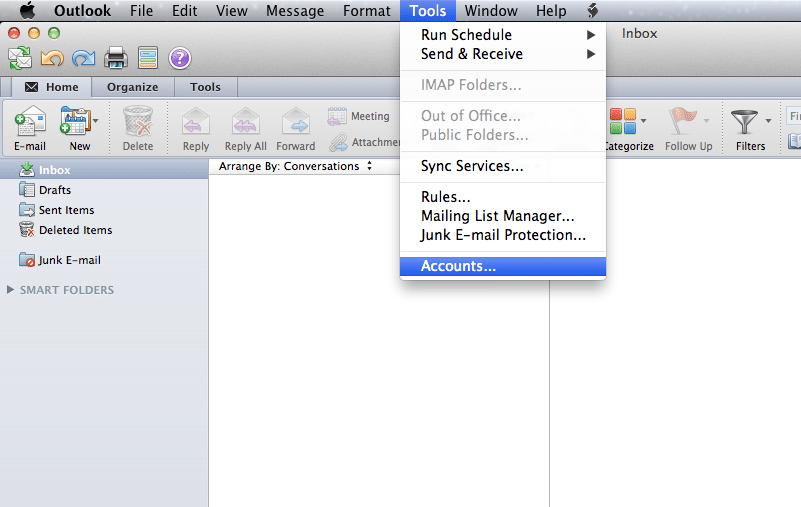
- Manual Outlook 2011 Para Mac Os
- Outlook Manual Outlook 2013
- Manual Outlook 2011 Para Mac Download
- Manual Outlook 2011 Para Mac Full
- Microsoft Outlook 2011 For Mac
How To Setup Outlook 2011 For Mac 1. Double click the outlook icon from the dock or application folder 2. At the welcome to outlook for mac screen check the make outlook my default application for email box and select the add account button. After selecting the add account button the account screen will appear select exchange account. Respond to a meeting request: Outlook 2011 for Mac. When invited to a meeting through Outlook 2011, there are three actions that you can take: Accept, Decline, and Tentative. Until you act on the meeting invite, Outlook automatically sets your reply to Tentative. The date and time of the meeting will also be marked as Tentative in your calendar.
Email and calendar
Email and calendaring for faculty and staffRespond to a meeting request: Outlook 2011 for Mac
When invited to a meeting through Outlook 2011, there are three actions that you can take: Accept, Decline, and Tentative. Until you act on the meeting invite, Outlook automatically sets your reply to Tentative. The date and time of the meeting will also be marked as Tentative in your calendar.
- When you open a meeting request, you will see a window very similar to an email message with additional buttons: Accept, Tentative, and Decline. You will also see a copy of your calendar on the right-side pane to let you know if you have any schedule conflicts.
You don't have to act on a meeting request right away; however, if you delete a meeting request, it will decline the meeting automatically. - You have three response options to a meeting request: you can Accept, mark it as Tentative, or Decline the request. Each of these options has additional options:
- Respond With Comments: a new window will open for you to type in your comments in the message body (see image, below). Click Send to send your response to the meeting organizer.
- Respond Without Comments: you will notify the meeting organizer that you are attending. The meeting request window will close immediately.
- Do Not Send a Response: if you select this, the meeting organizer won't know if you are attending or not. The meeting request window will close immediately.
- After you respond to a meeting request, it will be moved from your Inbox to your Deleted Items folder.
How-tos
Setups
Downloads
| Email & calendar |
How can I view the full headers of a message with Outlook 2011 for Mac?
slhck3 Answers
The only way I've found is to right-click on the message in the message list and choose View Source in the popup menu. This will open the full source of the message, including headers, in a new TextEdit document.
Manual Outlook 2011 Para Mac Os
Just Save as the email to disk, and open it with a text editor.
Outlook Manual Outlook 2013

On any Mac, holding down the Control key and clicking is the equivalent of right-clicking on a PC. It will usually bring up a contextual menu that shows choices of actions available for the element that is selected at the time.
Manual Outlook 2011 Para Mac Download
To see which e-mail address an e-mail was sent to, open the specific e-mail, then hover over the alias in the e-mail header's To field. A pop-up will expand to show the actual e-mail address tied to that alias.
Seeing the full e-mail address of the sender is a little more complicated, because hovering over the From alias usually displays only a truncated portion of the actual e-mail address. The same can happen if you hit Reply (with the intention of deleting the Reply e-mail before sending it).
However, if you hover over the From address, a pop-up window will appear, with a number of icons along the bottom. The icon all the way on the right (picture of an index card) will open an Outlook Contact form, where the full e-mail address of the Sender will be displayed. Once you've viewed the e-mail address, close the Contact form and choose Don't Save (unless you really want to create a contact for that sender, in which case, hit Save). Sounds complicated, but only takes a few seconds.